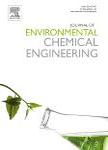版权所有:内蒙古大学图书馆 技术提供:维普资讯• 智图
内蒙古自治区呼和浩特市赛罕区大学西街235号 邮编: 010021

作者机构:Guizhou Acad Sci Guizhou Acad Testing & Anal Guiyang 550014 Guizhou Peoples R China Tongji Univ Sch Environm Sci & Engn State Key Lab Pollut Control & Resources Reuse Shanghai 200092 Peoples R China
出 版 物:《JOURNAL OF ENVIRONMENTAL CHEMICAL ENGINEERING》 (J. Environ. Chem. Eng.)
年 卷 期:2025年第13卷第2期
核心收录:
学科分类:0830[工学-环境科学与工程(可授工学、理学、农学学位)] 0817[工学-化学工程与技术] 08[工学]
基 金:Young Scholar Science Foundation of Guizhou Academy of Sciences
主 题:Magnetic flocculation Magnetic nanoparticles Microalgae Machine learning Shapley additive explanation Ensemble algorithm
摘 要:The emerging magnetic flocculation (or harvesting) with magnetic nanoparticles (MNPs) is a promising technology for microalgae dewatering. However, unearthing MNPs with high harvesting efficiency (HE) toward diverse microalgae relies on laborious experiments so far, a robust approach therefore is urgently needed to preevaluate the harvesting power of MNPs. Here, we predicted HE using machine learning algorithms across 1151 data points, in which the properties of MNPs and microalgae, and conditions of magnetic flocculation were comprehensively considered. Among 8 machine learning algorithms, the optimal XGBoost model showcased the best predictive performance with a high coefficient of determination (0.932), a low mean square error (6.96 %), and a low mean absolute error (4.17 %) on the test dataset. The model was also verified by batch experiments, demonstrating its ability to estimate HE accurately. Further, the Shapley additive explanations approach was used to decipher how the model made predictions from local and global perspectives, and these interpretations may offer guidelines for both the rational design of MNPS and the selection of microalgae species in magnetic flocculation. This work highlights the introduction of machine learning models to predict the harvesting ability of diverse MNPs toward microalgae, paving the way for the utilization of microalgal biomass.